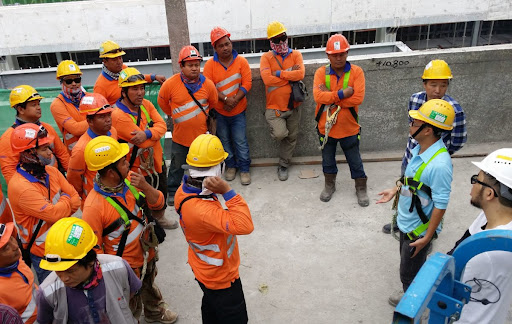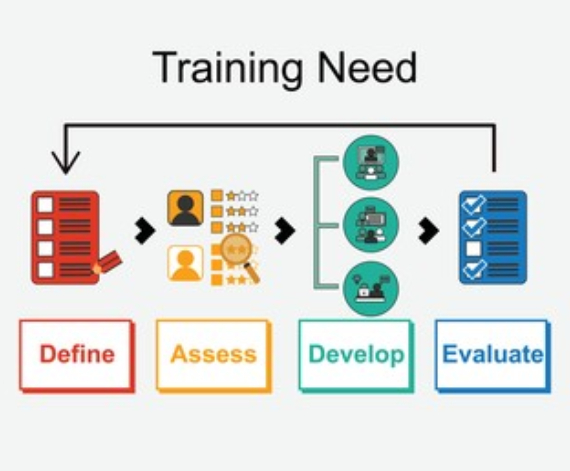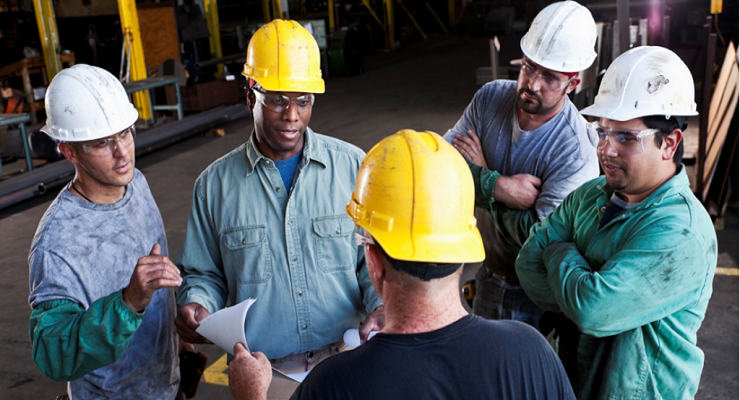Certified Scaffolding Safety Training by TheSafetyMaster

Construction Safety Audit
August 14, 2023
Lightening protection risk assessment by TheSafetyMaster
August 17, 2023Outline:
Scaffolding is an integral part of many construction projects, providing a safe and stable platform for workers to perform their duties at height. In this article, we delve into the world of Certified Scaffolding Safety Training by TheSafetyMaster and explore the crucial role it plays in ensuring the well-being of workers. By equipping individuals with the necessary knowledge and skills, this training program aims to mitigate risks, prevent accidents, and promote a culture of safety in the construction industry.
The Importance of Certified Scaffolding Safety Training:
In this section, we highlight the significance of obtaining certified scaffolding safety training. We discuss how such training not only enables workers to comply with legal requirements but also empowers them with invaluable skills that can save lives. TheSafetyMaster’s comprehensive program covers topics ranging from understanding the basics of scaffolding to identifying potential hazards, emphasizing personal protective equipment (PPE), preparing work areas, erecting and dismantling scaffolds safely, adopting best practices while working on scaffolds, conducting regular inspections for maintenance purposes, and effectively dealing with emergency situations.
Step 1: Understanding the Basics:
Before embarking on any task involving scaffolding, it is vital for workers to have a solid foundation in understanding its components, principles, and functionalities. This section explores key concepts such as scaffold types (e.g., supported scaffold or suspended scaffold), load capacities, stability factors, secure anchoring techniques, and proper usage guidelines. By gaining a thorough grasp of these fundamentals through TheSafetyMaster’s training program, workers can confidently navigate complex scaffolding systems while minimizing risks.
Step 2
Imagine a world where every construction site is a safe haven for workers. A world where accidents and injuries are minimized, and lives are protected. Unfortunately, this is not always the case when it comes to scaffolding, a vital component of many construction projects.
In today’s article, we delve into the compelling topic of Certified Scaffolding Safety Training by TheSafetyMaster. We will explore the importance of this training and how it can make a significant difference in ensuring the well-being of workers on construction sites. Whether you’re an industry professional or simply curious about workplace safety measures, this article promises to provide valuable insights that will leave you feeling optimistic about the potential for change.
The Importance of Certified Scaffolding Safety Training
Safety is not just a mere concept; it is an essential aspect of any workplace, especially in industries where workers are exposed to potential hazards. When it comes to working at heights, such as on scaffolding structures, the significance of certified scaffolding safety training cannot be overstated. It serves as a vital tool in ensuring the well-being and protection of workers, safeguarding them from accidents that may result in life-altering injuries or even fatalities.
Through certified scaffolding safety training, workers gain the knowledge and skills necessary to navigate potentially hazardous worksites confidently. They become equipped with an understanding of essential safety protocols and procedures that effectively mitigate risks associated with working at heights. Such comprehensive training empowers individuals to identify potential hazards proactively, respond appropriately to emergency situations, and implement preventive measures to foster a culture of safety.
Step 1: Understanding the Basics
Scaffolding, a vital component of construction and maintenance work, demands a solid understanding of its fundamental principles. To embark on the journey of certified scaffolding safety training, one must start by comprehending the basics. This involves familiarizing oneself with various types of scaffolding, their components, and their intended uses.
By gaining an in-depth understanding of scaffold structures such as supported scaffolds, suspended scaffolds, and mobile scaffolds, workers can navigate their way through different work environments with confidence. They learn about load capacity requirements, proper anchoring techniques, and how to prevent structural failures that could jeopardize both personal safety and project success.
Step 2: Identifying Potential Hazards
In the realm of scaffolding safety, there is an adage that holds true: “Prevention is better than cure.” To ensure a secure work environment, it is crucial to identify potential hazards beforehand. By recognizing these risks and taking proactive measures, we can prevent accidents and protect the well-being of workers.
One primary aspect of identifying potential hazards involves conducting a thorough site assessment. This evaluation entails scrutinizing the surrounding area where scaffolding will be erected. Factors such as the terrain, nearby structures, and overhead obstructions must be taken into consideration. Additionally, analyzing weather conditions plays a vital role in hazard identification.
Furthermore, it is essential to assess any potential human factors that may pose risks to workers’ safety. This includes evaluating aspects such as workers’ experience level with scaffolding, their knowledge of safety protocols, and their physical fitness. By recognizing these factors upfront, necessary precautions can be implemented to address any vulnerabilities or gaps in knowledge.
In sum, identifying potential hazards in scaffolding operations requires a meticulous examination of both environmental conditions and human factors. By undertaking this comprehensive analysis and taking appropriate preventive measures, we can create a safer working environment that empowers individuals to carry out their tasks confidently.
Step 3: Personal Protective Equipment (PPE)
When it comes to working at heights, personal protective equipment (PPE) is essential for safeguarding the well-being of workers. The correct use of PPE can significantly reduce the risk of injuries or fatalities on scaffolding sites. In this step, we will delve into the various types of PPE that should be worn to ensure maximum safety and provide a comprehensive understanding of their significance.
First and foremost, a sturdy helmet is an indispensable element in protecting the head from falling objects or potential impacts. It acts as a guardian, shielding workers from unforeseen accidents that may occur on construction sites. Additionally, wearing a high-visibility vest enhances visibility, making workers easily identifiable and reducing the likelihood of collisions or accidents.
Furthermore, safety harnesses are crucial for securing individuals working at heights and preventing falls. These harnesses distribute forces throughout the body, minimising the impact on any specific area in case of a fall. Equipping workers with non-slip safety boots ensures stability by providing traction on slippery surfaces.
To protect hands from cuts or abrasions, sturdy gloves are indispensable companions for scaffolding work. Additionally, safety goggles shield eyes from dust particles or debris that can cause harm when working overhead or in windy conditions. Lastly, earplugs help guard against excessive noise levels often found on construction sites.
The proper selection and correct usage of personal protective equipment instills confidence in workers and assures their well-being while working at heights. By prioritizing PPE and ensuring its consistent use, employers demonstrate their commitment to promoting a safe work environment where accidents are minimized and lives are protected.
Step 4: Preparing the Work Area
Creating a safe and organized work area is essential before erecting scaffolding. A cluttered or poorly prepared site can increase the risk of accidents and jeopardize the overall stability of the structure.
To begin, clear any debris or obstructions from the designated work area. This includes removing loose objects, such as tools, materials, or even foliage. Ensuring a clean slate will minimize tripping hazards and allow for smooth movement around the scaffold.
Next, assess the ground conditions. The surface should be level and firm to provide a stable foundation for the scaffolding base plates or adjustable legs. If there are uneven areas, use appropriate measures like shims or leveling devices to ensure stability.
In addition to preparing the ground, it is crucial to identify any potential underground hazards such as utility lines or pipes that could be damaged during scaffold installation. Contacting relevant authorities for mapping these utilities can prevent disastrous accidents.
The final step in preparing the work area involves establishing clear boundaries around the scaffold. Erecting safety barriers or using caution tape will prevent unauthorized access and keep workers focused on their tasks without unnecessary distractions.
A properly prepared work area not only enhances productivity but also instills confidence in workers regarding their safety measures. By investing time in this crucial step, we create an environment where individuals feel protected and motivated to carry out their duties effectively.
Step 5: Erecting and Dismantling Scaffolding
When it comes to erecting and dismantling scaffolding, precision and careful planning are paramount. Begin by ensuring a stable foundation, suitable for supporting the weight of the scaffold and its occupants. Properly position base plates or adjustable feet on solid ground, avoiding any loose or uneven surfaces that could compromise stability.
Next, systematically assemble each scaffold component, following manufacturer guidelines meticulously. Ensure that all connections are securely fastened using appropriate fittings or couplers. Take the time to verify plumbness and levelness at each stage of assembly, guaranteeing a solid structure that inspires confidence.
Dismantling scaffolding requires just as much care to ensure safety. Start by removing all tools, equipment, and debris from the platform to prevent accidents during dismantling. Carefully disassemble the scaffold in reverse order of assembly while maintaining balance and stability throughout the process.
Erecting and dismantling scaffolding may seem like routine tasks within construction projects; however, taking them lightly can have severe consequences. By prioritizing meticulous planning, attention to detail during assembly, and calculated steps during dismantling, we can create a working environment where safety is never compromised.
Step 6: Safe Scaffolding Practices
In order to ensure a secure and accident-free work environment, it is crucial to adhere to safe scaffolding practices. The following guidelines will help mitigate potential risks and create a positive scaffolding experience:
1. Stability is paramount: Before starting any task on the scaffold, it is essential to check that it is stable and properly secured. Ensure that all the components are in good condition and that there are no loose or damaged parts. A solid foundation will provide a reliable base for your work, giving you the confidence to perform your duties effectively.
2. Proper positioning: Pay attention to the placement of tools and materials on the scaffolding platform. Keep them organized, ensuring they do not obstruct movement or pose any tripping hazards. By maintaining a clutter-free workspace, you can enhance productivity while reducing the risk of accidents.
3. Mind your balance: Always maintain three points of contact when climbing up or down the scaffold structure—two hands and one foot or two feet and one hand should be firmly secured at all times. This practice helps distribute weight evenly, reducing the likelihood of slips or falls.
4. Respect weight limits: Every scaffold has its weight-bearing capacity, which must never be exceeded. Carefully consider the combined weight of workers, tools, equipment, and materials before using the scaffold for any purpose.
5. Communication is key: Establish clear communication channels with your colleagues while working on scaffolding; this allows for timely coordination and enables quick response in case of emergencies or safety concerns.
By diligently following these safe scaffolding practices, you contribute to fostering
Step 7: Regular Inspection and Maintenance
In the realm of scaffolding safety, regular inspection and maintenance are crucial to ensure a secure and hazard-free working environment. Just as we maintain our health through regular check-ups, scaffolding demands attention to detail for its longevity and effectiveness. By adhering to a diligent inspection routine prescribed by TheSafetyMaster’s certified training, potential risks can be identified early on, preventing accidents before they occur.
Inspections should encompass thorough examinations of all components, including scaffold platforms, frames, braces, and connections. Each element needs careful scrutiny for signs of wear and tear, corrosion, or any potential damage that may compromise the structure’s stability. TheSafetyMaster’s certified scaffolding safety training equips workers with the knowledge to identify even subtle indications of weakness or instability in their scaffoldings.
Step 8: Dealing with Emergency Situations
In the unpredictable realm of construction work, it is imperative to be prepared for any unforeseen circumstances that may arise. Despite meticulous planning and adherence to safety protocols, emergencies can sometimes occur. In such situations, certified scaffolding safety training equips workers with the skills and knowledge necessary to swiftly respond and mitigate potential risks.
During an emergency, maintaining a calm and composed demeanor is paramount. A well-trained individual will know how to assess the situation quickly and make informed decisions. Whether it’s a scaffold collapse, a worker experiencing a medical issue while on scaffolding, or any other unforeseen incident, proper training ensures that workers understand the appropriate steps to take in order to protect themselves and their colleagues.
Real-Life Stories: How Scaffolding Safety Training Transformed Lives
Within the realm of scaffolding safety, stories abound that highlight the profound impact of certified training on individuals’ lives. One such inspiring tale revolves around John, a construction worker who initially approached scaffolds with trepidation. After completing TheSafetyMaster’s comprehensive training program, John’s confidence soared to new heights. Equipped with knowledge about hazard identification and safe practices, he not only excelled in his work but also became an advocate for safety within his team.
In another remarkable account, we meet Sarah, a passionate young apprentice eager to make her mark in the construction industry. As she delved into TheSafetyMaster’s scaffolding safety curriculum, Sarah learned essential skills such as erecting and dismantling scaffolds meticulously. Empowered by this newfound expertise and armed with a steadfast commitment to safety, Sarah quickly earned a reputation as a reliable and valued team member on various projects. Her success story is a testament to the transformative power of certified training.
Conclusion
In conclusion, Certified Scaffolding Safety Training by TheSafetyMaster is not just a mere requirement but a vital investment in the well-being of construction workers. By equipping individuals with the knowledge and skills to identify hazards, use proper safety measures, and respond effectively in emergency situations, this training program has the power to transform lives. Imagine a future where every worker returns home safely after a day’s work, confident in their ability to navigate scaffolding structures with precision and caution. It is through initiatives like this that we can build a safer and brighter future for the construction industry.
Sanjeev Paruthi
TSM TheSafetyMaster® Private Limited
Unit No 221-451-452, SPL1/J, 2nd & 4th Floor, Sunsquare Plaza Complex, RIICO Chowk, Bhiwadi 301019, Rajasthan, India
Phone: +91 1493 22 0093
Mobile: +91 7665231743/9413882016
Email: info@thesafetymaster.com




